In recent years, WFS (White Feces Syndrome) of white shrimp has happened frequently in cultural areas around the world. The sick shrimps eat and grow slowly, which leads to weight loss, low yield and high feed conversion rate. In some cases, "withered shrimps" and even running mortality occur, which seriously affects the economic benefit of shrimp farming.
The proliferation of submucosal cells and the exfoliation of epithelial cells are the typical enteric pathologic changes of WFS. Multiple exfoliations of the layer of fibrotic, proliferating cells result in the formation of white feces. The following are the primary signs: The feces are lathy, white, and sticky, with a consistency akin to cotton thread. They frequently float on the water's surface. Feces that have been accumulating in large numbers for a long time will smell. The shrimps have a normal appetite and show no overt symptoms in the early stages of the illness. As the progressing of illness, shrimps lose their appetite and weaken, which separates the shell from the flesh. Shrimps might continually circle the pond and eventually undetected deaths occur. (Intestinal rubeosis or white pus in the intestine).
This article briefly analyzes the characteristics of white stool symptoms, causes of formation and prevention programs, with the aim of helping the majority of practitioners.
1.Characteristics and occurrence conditions of White Feces Syndrome
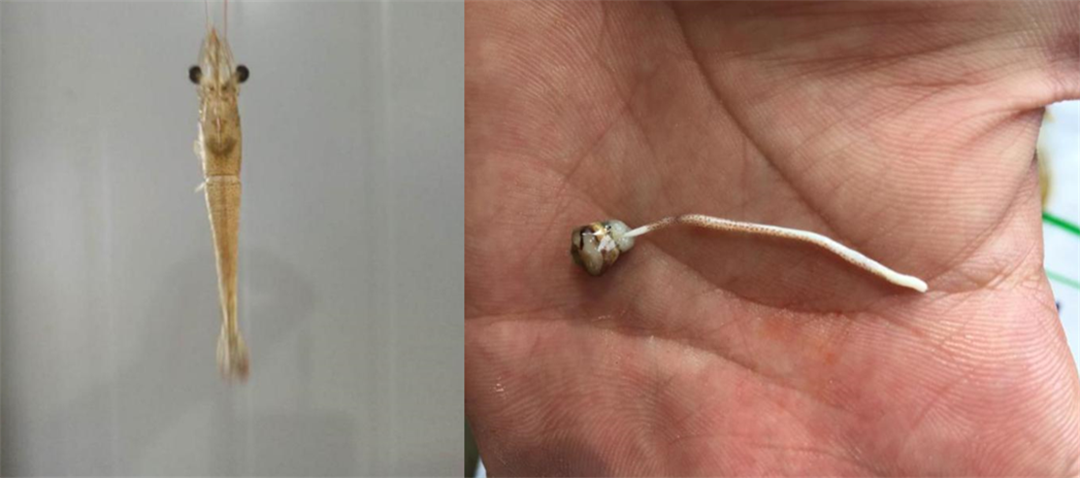
Table 1 Symptoms of diseased white shrimps at different stages
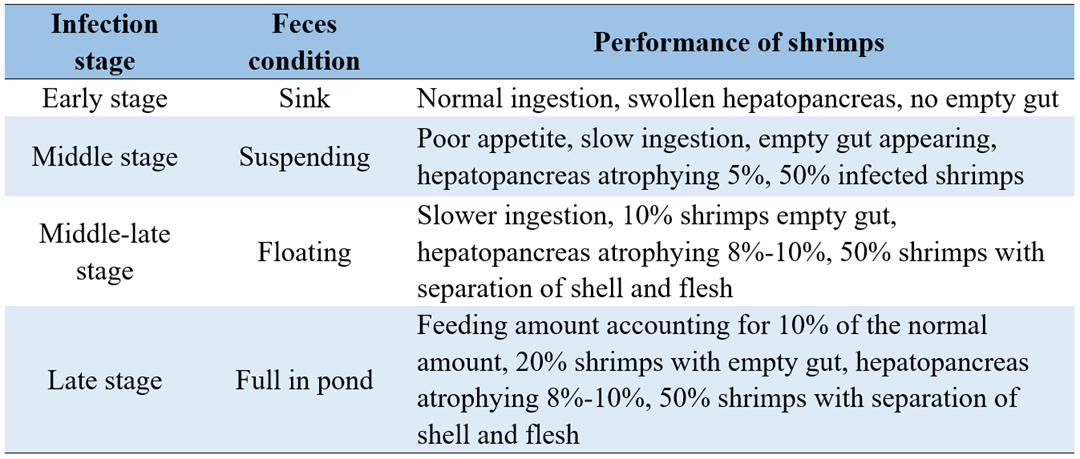
Table 2. The factors and susceptible infection conditions of WFS
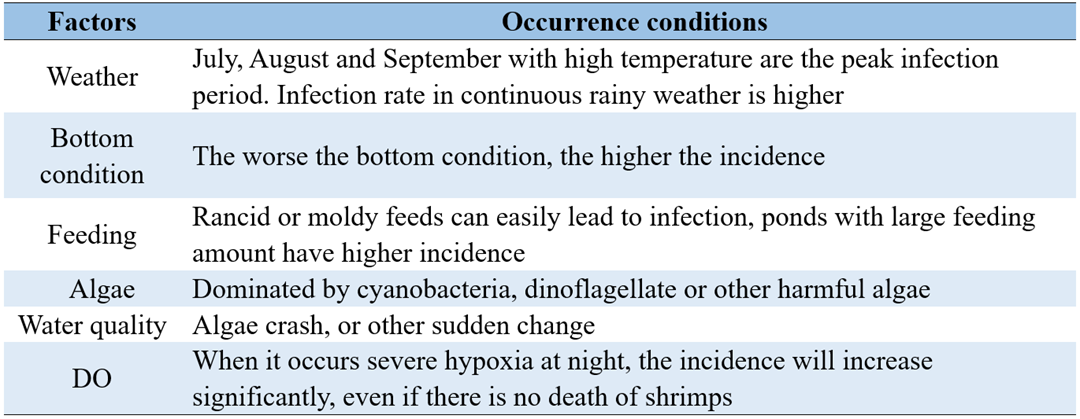
2. Causes of WFS
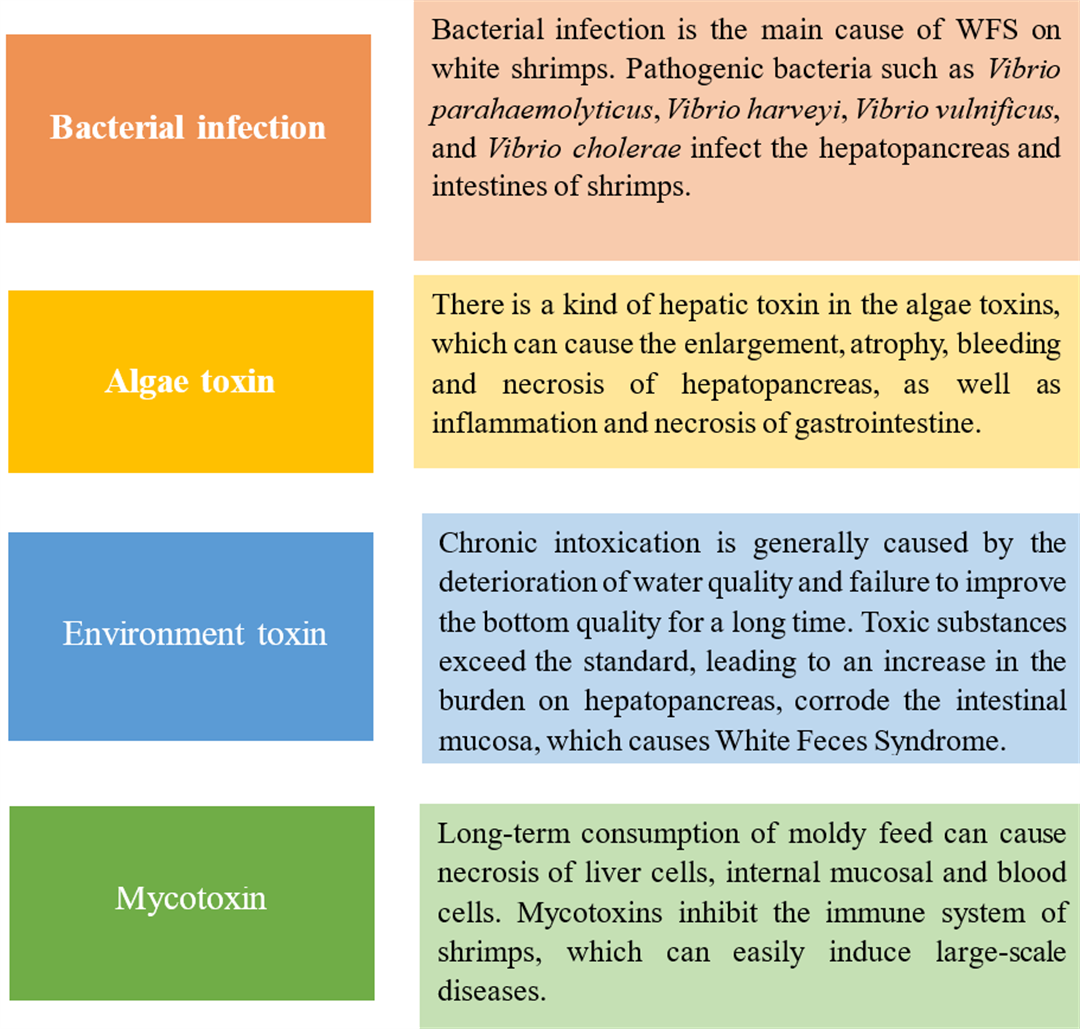
The vicious circle between the sickness and the variables that generate the syndrome is actually the reason for White Feces Syndrome's occurrence and difficulties in treating it.
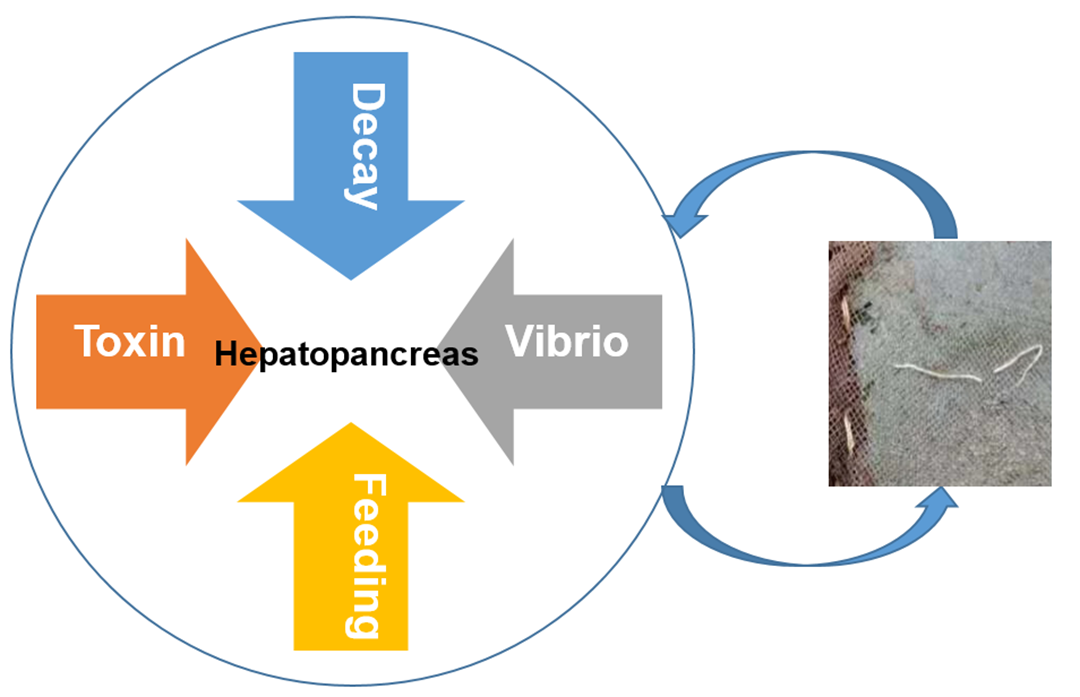
3. Prevention of WFS
WFS occurs in the early and middle stages, if the treatment program in a timely manner, it is still possible to recover health, but once the pond floats a large number of white feces, often unable to recover. Therefore, the treatment of white feces must be prevention oriented. Specific focus on the following three points:
1. maintain water quality, improve the stability of the water system. Regular treatment of harmful algae, effective control of harmful algae content.
2. Use high-quality feed rather than bad or moldy feed to avoid causing enteritis of shrimps.
3. Carefully observe the condition of shrimp feces (thick or short feces is the best), and pay attention to the health status of liver and intestine, and regularly utilize biological agents and detoxification and anti-stress products to adjust water and pond bottom quality.